

Associate Professor Dr Shariffah Suhaila Syed Jamaludin
Department of Mathematical Sciences
Faculty of Science, Universiti Teknologi Malaysia
Malaysia
Dr Shariffah Suhaila Syed Jamaludin is an associate professor in the Department of Mathematical Sciences, Faculty of Science, Universiti Teknologi Malaysia. Currently, she is one of the research fellows at the UTM Centre for Industrial and Applied Mathematics (UTM-CIAM). She completed her Ph.D. degree in the field of Statistics in 2010 from the Universiti Kebangsaan Malaysia. In 1999, she received her Master's degree in Statistics from Universiti Kebangsaan Malaysia. She spent her undergraduate at Carleton University, Ottawa, Canada, and received a bachelor degree in Statistics in 1997. Her research interests include statistical modelling & analysis for climate and hydrological data, functional data analysis, spatial statistics, and disease modelling using generalized linear and additive models. She actively publishes several research articles and received several research grants from the government and university.
Application of Functional Data Analysis Tools in Hydroclimate and Health Science Areas
In the era of high-dimensional data, a growing research area has focused on the development of functional data analysis (FDA) as statistical tools in visualizing, exploratory, summarizing dataset and modelling. Modelling has become a difficult task, especially when dealing with complex and high-dimensional data. With the advancement of technology, a modern statistical tool known as functional data analysis (FDA) is increasingly being employed in various scientific domains, including biomedical, public health, biology, environmental sciences, climatological, hydrological, and demographic research. Functional data analysis is a new modern statistical method that converts data at discrete time intervals as observations over a continuum interval, viewed as a single entity or curve. The technique provides alternative ways to current conventional statistical methods by adding temporal aspects to the statistical analysis. The FDA's flexibility, such as the ability to provide additional information from smoothing functions and the lack of concerns about correlations between repeated measurements, makes the method extremely demanding. The objective of this study is to examine the applications of functional data analysis in hydroclimate analysis and health sciences areas. The methods such as functional descriptive, functional principal components, functional analysis of variances and graphical plots via rainbow plot, functional bagplot and functional high-density range plot are often used as functional tools. The outputs of functional approach were presented in terms of smoothing curves which provide additional information on the shape and variations; outliers; velocity and acceleration which could be analysed at any time interval which is not available from the current conventional statistical methods.
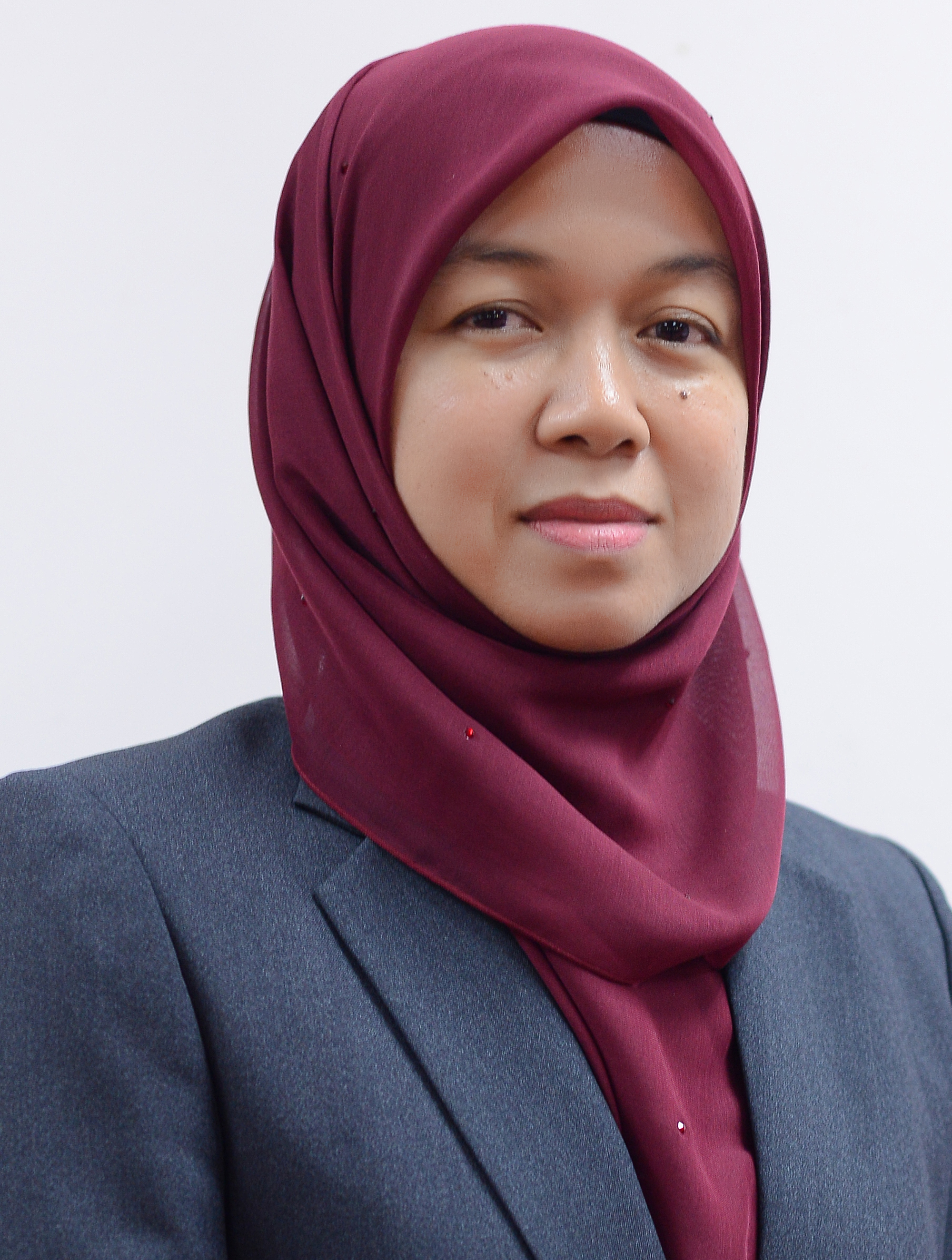
Associate Professor Dr Dzati Athiar Ramli
School of Electrical and Electronical Engineering
Universiti Sains Malaysia
Malaysia
Dzati Athiar Ramli is currently an Associate Professor at the School of Electrical & Electronic Engineering, Universiti Sains Malaysia (USM) and her current administration post is as a Quality and Commercialization Programme Chairman. She is also a member of Intelligent Biometrics Research Group (IBG), USM. She was previously the visiting lecturer at the Department of Computer Science, University of Surrey, United Kingdom.
She received her Bachelor of Applied Science (Computer Aided Geometrical Design) and Master of Science (Mathematics) from the School of Mathematical Sciences, USM. She then obtained a Ph.D. degree in Electrical, Electronic and Systems Engineering from UKM. Her areas of interest are digital signal processing and artificial intelligence with applications to speech, palmprint and electrocardiogram (ECG) biometrics and blind source separation (BSS) as well as in healthcare informatics for stroke monitoring and foetal ECG signal separation. She is also the principal investigator of several projects funded by USM and Ministry of Higher Education (MoHE) grants as well as a co-researcher for the ASEAN IVO International Grant and has published her research findings in local and international proceedings and journals.
Unlock Your World With Your Heartbeat: Evolution and Recent Trend of Electrocardiogram Biometrics
Biometric recognition provides automated security for identity recognition based on physiological or behavioural characteristics. It becomes one of the hottest topics in technologies nowadays as it offers an essential improvement over usernames and passwords. Emerging innovations to a mobile device, portable, wearable and other innovations are bringing biometrics to mainstream marketplaces. So far, various biometrics have been implemented in a real application for instance; face, speech, iris, signature and fingerprint. However, a security breach is one of the limitations of common biometrics. Recently, electrocardiogram (ECG) signal which is one of the most prominent biomedical signals for heart abnormality detection has been studied for the use of secure identity recognition. ECG has extremely discriminative characteristics in the biometric field and has recently received significant interest as a promising biometric trait. This innovation attracts intention among researchers owing to ECG signal is difficult to counterfeit through latent patterns as it is intrinsically originated from a critical heart activity. ECG signal analysis for biometric recognition can combine several steps, such as pre-processing, feature extraction, feature selection, feature transformation, and classification which is a very challenging task. Moreover, the selected success measures and proper structure of the ECG signal database play significant roles in biometric system analysis, considering that publicly available databases are essential to the research community to evaluate the performance of their proposed algorithms. To date, ECG technology has emerged as a new viable alternative approach in a biometric scenario. In this talk, we highlight the recent advances in ECG biometric technology, its challenges and feasible future research opportunities.
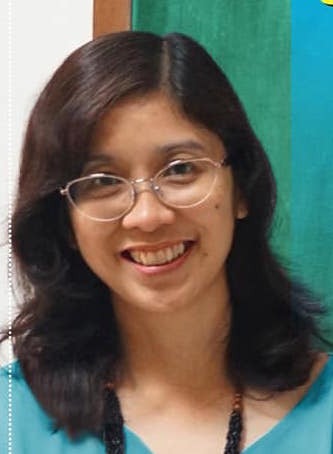
Associate Professor Dr Intan Muchtadi-Alamsyah
Faculty of Mathematics and Natural Sciences
Institut Teknologi Bandung
Indonesia
Intan Muchtadi-Alamsyah received her M.Sc. and Ph.D. in Mathematics at the University of Picardy France. At present, she is an associate professor in the Algebra Research Group, Faculty of Mathematics and Natural Sciences, Institut Teknologi Bandung. She was also appointed as the Vice President of the Southeast Asian Mathematical Society and a member of the International Center of Pure and Applied Mathematics (CIMPA). Her research topics are representation theory, ring theory, and applications of algebra in coding theory, cryptography and artificial intelligence.
On Orthogonal Circulant MDS Matrices
In 2019, Cauchois and Loidreau gave a necessary and sufficient condition for circulant maximum distance separable (MDS) matrices using q-polynomial rings. This work proves the non-existence of certain orthogonal circulant MDS matrices. The study also provides a necessary and sufficient condition for orthogonal θ-circulant matrices using q-polynomial rings. The orthogonal circulant MDS matrices over Galois rings are also discussed.
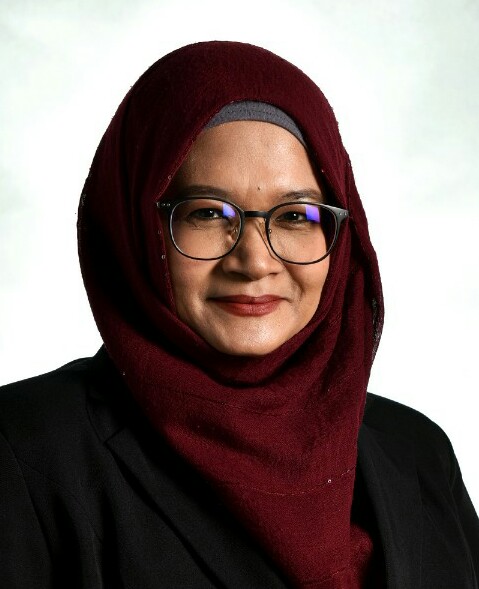
Professor Dr Noriszura Ismail
Department of Mathematical Sciences
Universiti Kebangsaan Malaysia
Malaysia
Dr Noriszura binti Ismail is a Professor in Actuarial Science Program, Department of Mathematical Sciences, Faculty of Science & Technology, Universiti Kebangsaan Malaysia since Aug 2016. She previously was an Associate Professor (2008-2016), a Senior Lecturer (2007-2008) and a Lecturer (1993-2007). She specialises in Risk Modelling & Applied Statistics. Her current research interests are non-life insurance, GLM, zero-inflation, pension, social security, and copula. She received her B.Sc. (Actuarial Science, 1991) and M.Sc. (Actuarial Science, 1993) from University of Iowa, USA and later, Ph.D. (Statistics, 2007) from Universiti Kebangsaan Malaysia. She has also passed five professional papers from the Society of Actuaries USA in 1994 (SOA100, SOA110, SOA120, SOA140 & SOA165).
Experience Rating Using Bonus-Malus, With Applications in R
Bonus-malus system, which is used interchangeably as “no-fault discount”, “merit rating”, “experience rating” or “no-claim discount” in different countries, is based on penalizing insureds who are responsible for one or more claims by a premium surcharge, and awarding insureds with a premium discount if they do not have any claims. Insurers use bonus-malus systems for two main purposes; to encourage drivers to drive more carefully in a year without any claims, and to ensure insureds to pay premiums proportional to their risks based on claims experience. In this presentation, we relate the NCD system with a discrete time parameter Markov Chain, and show some applications of the Markov Chain model on the NCD system such as stationary distribution, convergence rate, premium evolution, and premium rating. We also show briefly the application of R on several insurance data.

Mr Sinan Ismail
Founder and CEO
Durioo Sdn Bhd, Digital Durian
Malaysia
Sinan Ismail is an alumnus of the School of Mathematical Sciences, USM, where he received his Bachelor of Applied Science (Computer Modelling) in 2003. He is a co-founder and CEO of Digital Durian that produces Didi & Friends, a 3D animation. The animation is dubbed into seven languages including English, Malay, Spanish, Portuguese and Bahasa Indonesia, and has 5 billion views on YouTube and more than 7 million subscribers. Digital Durian also produces Omar & Hana animation, which was launched in February 2017. The animation targets young Muslim children around the world to teach them good Islamic values and virtues. Currently, he is the founder and CEO of Durioo+, a safe-streaming platform with an aspiration to create a positive impact through fun and meaningful high-quality content for Muslim children.
From USM to Didi & Friends to Durioo+: Creating Impact to Millions of Children Globally
Follow the journey of Sinan Ismail, the founder of Didi & Friends, Omar and Hana and now Durioo+. From creating YouTube cartoons with billions of views to now a tech start-up invested by global investors including the No. 1 Start-up Accelerator in the world - Y Combinator. Learn from his ups and downs, and be inspired by his journey.

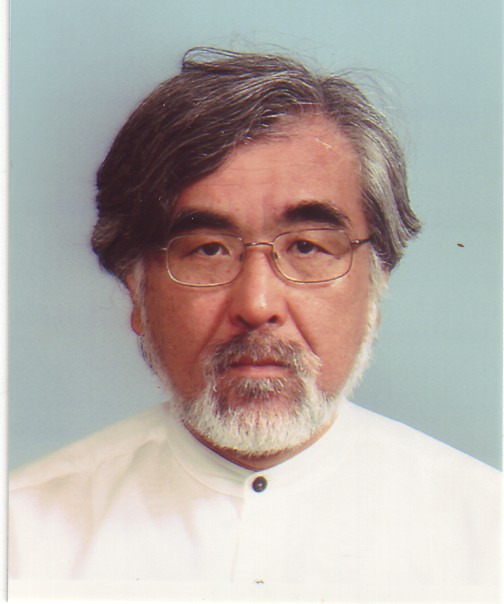
Professor Dr Hirohide Haga
Faculty of Science and Engineering
Doshisha University
Japan
Dr Hirohide Haga received his B.Eng. and M.Eng. in electronics from Doshisha University, and Ph.D. in computer science from Kyoto University in 1978, 1980, and 1995 respectively. He is now a professor of computer science and engineering at Faculty of Science and Engineering, Doshisha University. Before joining to Doshisha, he was a research staff engineer of Hitachi, Ltd., Japanese computer company. He was appointed as a Chartered IT professional (Chartered Engineer of Information Technology) from the British Computer Society. He was also appointed as an Academic Fellow of USM, School of Mathematical Science from 2021 to 2022. His research interests include the theory and practice of programming languages, multi-agent system and its application, secure database, and image processing.
Programming and Programming Languages Based on Mathematical Concepts
In this talk, non-popular programming style and languages are introduced. They are based on mathematical concepts. These programming languages provide “declarative programming style” which is a different programming style from that of conventional programming languages such as C and other popular languages. For example, declarative programming languages do not provide iteration description such as “for” loop and “while” loop. Instead, they provide recursive processing to realize iteration. Furthermore, as declarative programming style and languages have strong theoretical background, they are suitable for theoretical analysis of programs and programming such as program verification and proof of correctness. Basic concepts and some examples of two declarative programming languages are provided in this talk.
Workshop Title: Design and Teach Trigonometric Function Graph using GeoGebra
Speaker: Miss Sanqeetha Kunasaikaran
Attained Masters in Mathematics Education with Technology, Universiti Malaya and Bachelor of Science with Education (Mathematics), Universiti Sains Malaysia. The speaker has been awarded Service Excellence Award in 2020. The speaker is also an active DidikTv Malaysia presenter and also content Presenter for DLP Programme under Bahagian Pembangunan Kurikulum (BPK, KPM). She is also the Main Coach for GeoGebra in the Sentul district, Kuala Lumpur. The speaker is also actively involved in school and independent education organisation such as Persatuan Guru STEM Malaysia (PGSM), The speaker has conducted webinar under PGSM on Google and Microsoft applications and also workshop for high school teachers in Universiti Malaya. Apart from that, she was a pioneer in conducting Project-Based Learning Mathematics (Measure of Dispersion) in her school.
Workshop Synopsis:
In this workshop, GeoGebra will be introduced as a teaching tool to enhance students’ understanding on the trigonometric function graph and its modulus graph. Participants will also design task sheet to further develop students’ thinking skills based on the graph that has been created.
GeoGebra is a powerful tool use to teach geometry, algebra, spreadsheets, graphing, statistics and calculus in class. It is an easy-to-use application which can be used to create interactive learning resources. It is also an open and free software to be used by anyone around the World to conduct fantastic Mathematics class.
Objectives:
At the end of the workshop, participants will be able to design the sine (, cosine and tangent function graphs using GeoGebra. Participants will create simple sliders to show what happens to the value of a, and b in these graphs. Participants will also design the modulus sine, cosine and tangent graph on the original graph. Participant will create button to hide and unhide the original and modulus graphs. Participants will also be guided to create task sheet based on the original and modulus graph.
Who should attend:
Ideal for those who are interested in designing and teaching Trigonometric function using GeoGebra.
Requirements:
High-speed internet
Windows 10 and above
Sign up for GeoGebra account using organisation or personal Google email.
Mathematics and Additional Mathematics for high school background

ASSOCIATE PROFESSOR DR IOANNIS IVRISSIMTZIS
Department of Computer Science
Durham University, UK
This email address is being protected from spambots. You need JavaScript enabled to view it.
Ioannis Ivrissimtzis holds a PhD in Mathematics from the University of Southampton, UK, and is an Associate Professor at the Department of Computer Science at Durham University, UK. He has contributed to the areas of computer graphics and geometric modelling, in particular subdivision surfaces, triangle mesh compression, and surface reconstruction. His most recent work is on triangle mesh watermarking and steganalysis, computer vision applications in biometric identification, and proof of concept investigations on watermarking 3D printed objects.
STEGANOGRAPHY AND STEGANALYSIS FOR 3D MODELS
Digital steganography is the embedding of information into carrier files, which could represent text, audio, images, video, or 3D models. Typical applications include copyright protection, copy control, protection against unauthorised alteration, and covert communications. Steganalysis, on the other hand, aims at the detection of hidden messages embedded into the carrier file. In this talk, we present our work on steganographic and steganalytic algorithms for 3D triangle meshes. At the end of the talk, we will also present our work on the related problem of embedding and extracting information from physical 3D printed objects, rather than digital ones. The focus of that part of the talk will be on the different requirements, challenges, and employed techniques, between these two settings of digital vs physical carrier.

PROFESSOR DATO’ DR NORAINI IDRIS
President
National STEM Association
This email address is being protected from spambots. You need JavaScript enabled to view it.
Professor Dato’ Dr. Noraini Idris is a Founder and President, National STEM Association Malaysia and President IMT-GT Uninet STEM She gained her PhD from The Ohio State University, USA. She published a variety of national and international academics publications to her credit and is a Fulbright Research Fellow.Conducted several researches with UNESCO, the British Council, Australian Universities and the Sumitomo, Japan. Among her distinctions are the Distinguished Diversity Enhancement Awards, Graduate Research Alumni Student Award from Ohio State University, a Gold Medal for ITEX (Geneva, 2005) and Best Award at MTE since 2007 on designing assessment system for school-based assessment and higher education on Gold Medal at ITEX 2011, 2013, 2018 for designing Module of Teacher Education. Most recently, she has been awarded the Leadership STEM 2018 from the Japan Intellectual Property Association (JIPA) and Visionary Leadership Category from the International Education Award 2018.
BRIDGING TECHNOLOGY AND MATHEMATICS: USAGE OF GRAPHING CALCULATOR
In this era of fast technological advancement, keeping up with the latest innovations and inventions that technology can offer is essential to be relevant now and in the future. The graphing calculator provides millions of students worldwide as well as in Malaysia, with useful and exciting experiences, enhancing their mathematics learning with computer visualizations. Educators are now able to present mathematical ideas, concepts, and applications in both traditional as well as computer-generated numeral and graphical representations. Students who are engaged in their mathematical works are energized by four goals: success, curiosity, originality, and satisfying relationships. But the questions now are “How do we cultivate these drives in the students’ lives? How can we connect them?” To prepare students for life in today’s highly technical society, their mathematical knowledge must include and go beyond knowing the simple skills to solve more complex problems, and the use of graphing calculator-based instruction materials would be beneficial. One of the questions in the educational community is whether students will have a more meaningful learning experience by engaging themselves with mathematics and technology. In this presentation, the presenter will share what kind of work they find engaging and how to engage in work that stimulates students’ curiosity, permits them to express their creativity, and fosters relationships with others.
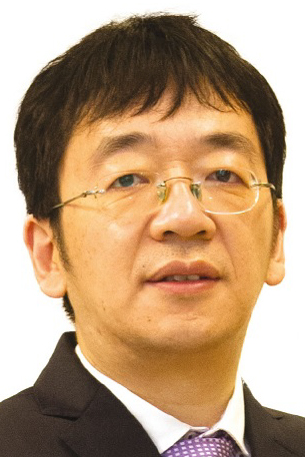
PROFESSOR DR MIN DAI
The Hong Kong Polytechnic University & National University of Singapore
Min Dai is Chair Professor in Applied Statistics and Financial Mathematics, Department of Applied Mathematics, The Hong Kong Polytechnic University (HKPolyU). Prior to joining HKPolyU in 2021, he taught at National University of Singapore and Peking University after receiving his PhD degree from Fudan University in 2000. His research focuses on financial derivative pricing, portfolio selection with market imperfections, corporate finance, and financial technology. He published in peer-reviewed journals of different disciplines, such as Journal of Econometrics, Journal of Economic Theory, Management Science, Mathematical Finance, Review of Financial Studies, and SIAM Journals. Currently he is a Co-editor of Digital Finance and serves in editorial boards of many academic journals, including Finance and Stochastics, Journal of Economic Dynamics and Control, SIAM Journal on Financial Mathematics, and Mathematics and Financial Economics.
BITCOIN MINING AND ELECTRICITY CONSUMPTION
We propose a dynamic industry equilibrium model for Bitcoin electricity consumption in a general framework, including Bitcoin miners’ optimal entry and exit with technology innovation. By adopting average operating costs as an approximation to the true operating costs, we overcome the difficulty of strong path-dependency due to the interaction among entry, exit, and technology innovation. The model can capture both the upside and downside co-movements of miners’ computing power, electricity consumption, and mining revenue. Our model shows that the Bitcoin electricity consumption will not grow indefinitely, with the ratio of Bitcoin electricity consumption to the miners’ revenue fluctuating within a range. This work is joint with Steven Kou, Shuaijie Qian, and Ling Qin.
Workshop Title:
Developing Problem Solving Ability in Mathematics using Classwiz Scientific Calculator
Speaker:
Assoc. Prof. Dr. Leong Kwan Eu
Biography: Dr. Leong Kwan Eu is a senior lecturer at the Faculty of Education, University of Malaya. He holds a Ph.D. in Mathematics Education from Columbia University Teachers College, New York. In addition, he obtained the Master in Science, Master in Arts and Master in Philosophy from Columbia University and the Master of Mathematics Education with Information and Communication Technology. He taught mathematics for 15 years at the secondary and college levels. He actively researches and publishes in the area of mathematical modelling, technology in mathematics education, secondary mathematics and statistical data analysis.
Workshop Synopsis:
Problem solving is crucial in mathematics and should be emphasised at all levels. Mathematical instructors, on the other hand, may not always be aware of how to meaningfully incorporate problem solving into the mathematics curriculum. Problem solving refers to mathematical assignments that may be used to increase students' mathematical learning and growth by posing intellectual difficulties. It is an essential process that is emphasised in the Malaysian Standard Curriculum for Secondary Schools' mathematics (KSSM) framework. In this workshop, participants would learn how to develop problem solving tasks that involves going through Polya’s four phases of solving a problem. Furthermore, the task developed would be solved with the assistance of the Classwiz scientific calculator. Not only will the learner solve the problem, but they will also validate the solutions with different methods.
Objectives:
- To develop mathematical problem solving tasks
- To develop mathematical problem solving abilities using Classwiz scientific calculator
Who should attend:
- Undergraduate & postgraduate students in mathematics
- Primary mathematics teachers
- Secondary mathematics teachers
- Mathematics educators
- Researchers
Requirements:
Casio fx570EX/fx-991EX Classwiz Scientific Calculator
https://edu.casio.com/freetrial/en/freetrial_form.php ( 90 days Free Trial)
More Articles ...
- MathTech22 Workshop: Get Started With Wolfram Mathematica for Data Analytics & Machine Learning
- MathTech22 Workshop: Enhanced conceptual understanding and skill building using TI technology
- MathTech22 Workshop: Teaching Mathematics with GAME!
- MathTech22 Workshop: Predictive Analytics in Medicine Using R
